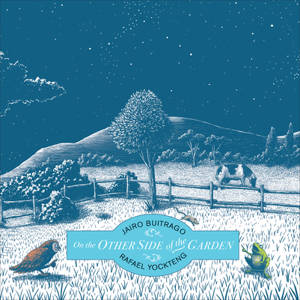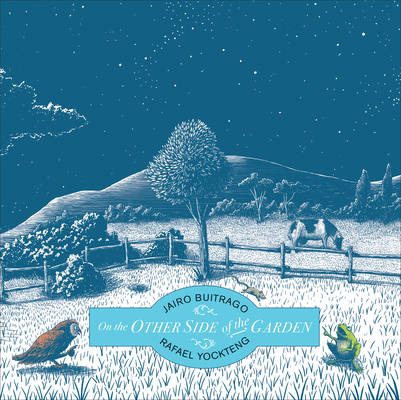
- Afhalen na 1 uur in een winkel met voorraad
- Gratis thuislevering in België vanaf € 30
- Ruim aanbod met 7 miljoen producten
- Afhalen na 1 uur in een winkel met voorraad
- Gratis thuislevering in België vanaf € 30
- Ruim aanbod met 7 miljoen producten
Omschrijving
"Those who feel physically or emotionally distant from beloved adults will take comfort in the idea that there are others who care. A subtle and affecting journey to resilience best shared one-on-one to pore over the spectacular artwork."--School Library Journal, STARRED REVIEW
From one of the great creative teams in picture books, On the Other Side of the Garden is about a city girl learning to accept the change brought about by her parents' separation after she is left at her grandmother's house in the country.
The girl feels abandoned and lonely, but after venturing into the nighttime garden, she is befriended by an owl, a frog and a mouse. Her talkative new companions show her an extraordinary new world by the light of the moon. When the girl gets back in the morning, her grandmother seems neither alarmed or angry about the girl's nighttime adventures. Instead she gently introduces her granddaughter to her new surroundings, making clear that the girl is welcome. And as the sun warms their backs, the two seem content to get to know each other better.
Buitrago's stories convey large truths through understatement and suggestion. This story, beautifully illustrated by Yockteng, shows how a child can use her own bravery and curiosity to confront confusing and potentially frightening realities, such as a parents' separation and being left with an almost unknown relative. There is an endnote about the plants and animals that might be found in such a garden.
Key Text Features
garden inventory
Correlates to the Common Core State Standards in English Language Arts:
CCSS.ELA-LITERACY.RL.1.7
Use illustrations and details in a story to describe its characters, setting, or events.
CCSS.ELA-LITERACY.RL.2.3
Describe how characters in a story respond to major events and challenges.
CCSS.ELA-LITERACY.RL.2.7
Use information gained from the illustrations and words in a print or digital text to demonstrate understanding of its characters, setting, or plot.
CCSS.ELA-LITERACY.RL.3.7
Explain how specific aspects of a text's illustrations contribute to what is conveyed by the words in a story (e.g., create mood, emphasize aspects of a character or setting)
CCSS.ELA-LITERACY.RL.4.1
Refer to details and examples in a text when explaining what the text says explicitly and when drawing inferences from the text.
Specificaties
Betrokkenen
- Auteur(s):
- Illustrator(s):
- Uitgeverij:
Inhoud
- Aantal bladzijden:
- 56
- Taal:
- Engels
Eigenschappen
- Productcode (EAN):
- 9781554989836
- Verschijningsdatum:
- 1/03/2018
- Uitvoering:
- Hardcover
- Formaat:
- Prentenboek
- Afmetingen:
- 244 mm x 241 mm
- Gewicht:
- 521 g

Alleen bij Standaard Boekhandel
Beoordelingen
We publiceren alleen reviews die voldoen aan de voorwaarden voor reviews. Bekijk onze voorwaarden voor reviews.









